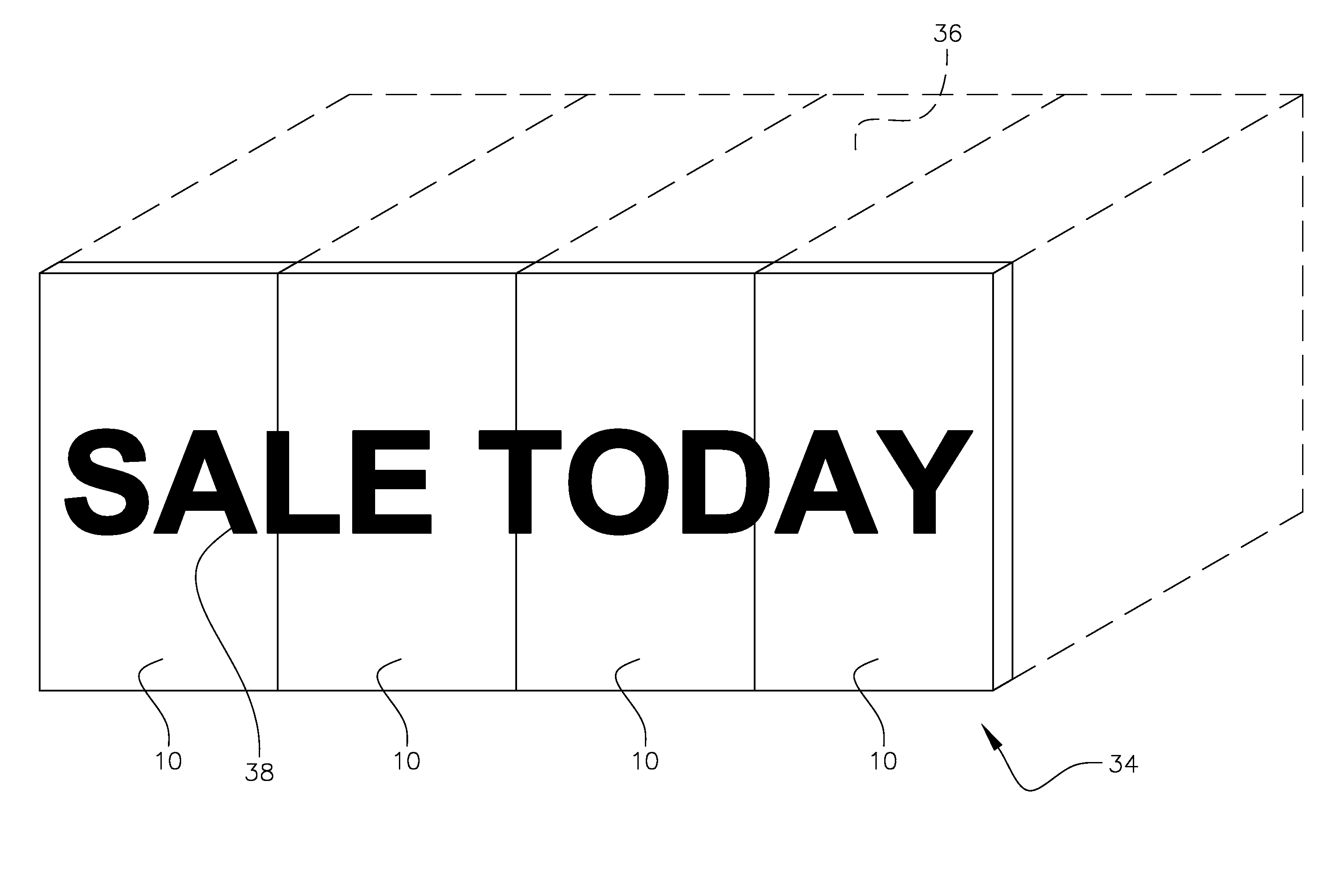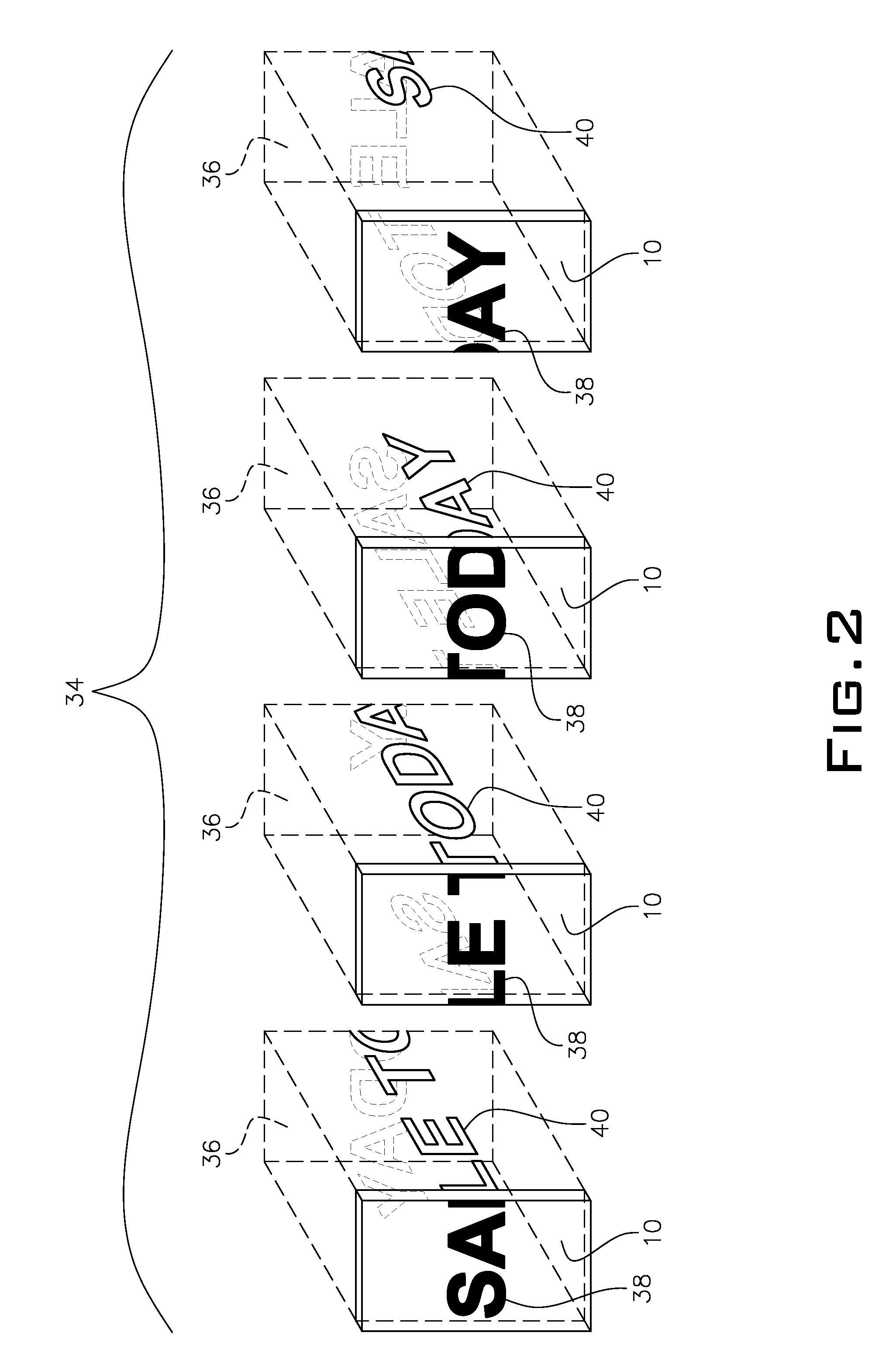Modular electronic sign and method of assigning a unique identifier to common modules of said sign
a module and electronic sign technology, applied in the field of electronic signs, display and messaging systems, can solve the problems of low data rate, minimal active host, and devoid of crystal control in each modular panel, and achieve the effect of reducing costs
- Summary
- Abstract
- Description
- Claims
- Application Information
AI Technical Summary
Benefits of technology
Problems solved by technology
Method used
Image
Examples
Embodiment Construction
, contained herein below, may be better understood when accompanied by a brief description of the drawings, wherein:
[0024]FIG. 1 is a perspective view of a message display sign utilizing modular panels of the present invention, said message display sign having a virtual screen s represented by dashed lines thereon;
[0025]FIG. 2 is an exploded view of the invention depicted in FIG. 1 wherein the virtual screen is once again represented by the dashed lines and wherein it is shown that a message to be displayed on said sign with said virtual screen is fully rendered on each modular panel even though at any given time only a portion of said message is displayed on an LED matrix on each modular panel of said sign;
[0026]FIG. 3 is a block diagram illustrating modular panels of a message display sign of the present invention which are coupled to a host controller that sends data along a single serial data line to said modular panels wherein different commands and data can be contained in sai...
PUM
 Login to View More
Login to View More Abstract
Description
Claims
Application Information
 Login to View More
Login to View More - R&D
- Intellectual Property
- Life Sciences
- Materials
- Tech Scout
- Unparalleled Data Quality
- Higher Quality Content
- 60% Fewer Hallucinations
Browse by: Latest US Patents, China's latest patents, Technical Efficacy Thesaurus, Application Domain, Technology Topic, Popular Technical Reports.
© 2025 PatSnap. All rights reserved.Legal|Privacy policy|Modern Slavery Act Transparency Statement|Sitemap|About US| Contact US: help@patsnap.com



